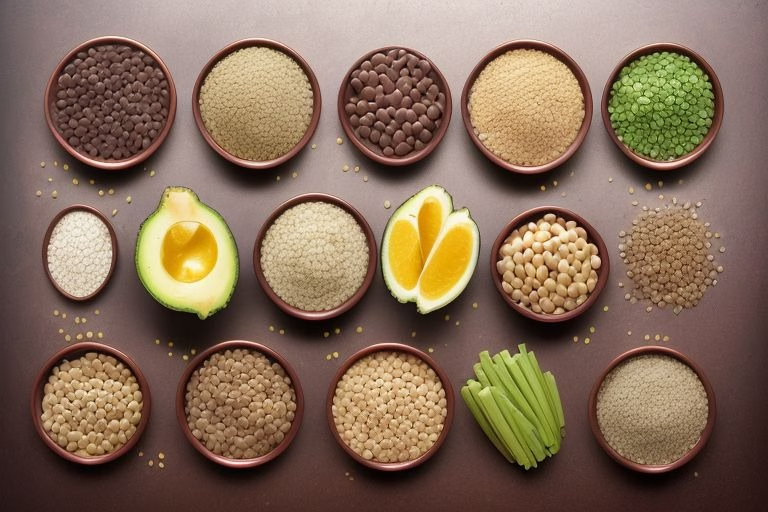Copper might not get as much spotlight as iron or calcium, but this essential mineral is a powerhouse for your health. From maintaining healthy bones to supporting your immune system, copper plays a vital role. If you’re looking to up your intake, here’s a list of 12 foods high in copper that you can easily include in your diet
Why Is Copper Important?
Copper is essential for:
- Energy production: Helps enzymes release energy from food.
- Iron absorption: Aids in transporting oxygen throughout the body.
- Immune support: Enhances your body’s ability to fight infections.
- Brain health: Supports the development of brain cells and communication between them.
Top 12 Foods High in Copper
1. Liver
- Why it’s great: Beef and lamb liver are some of the richest sources of copper. Just one ounce delivers more than your daily recommended intake.
- How to enjoy: Pan-sear with onions or blend into a pate for a nutritious spread.
2. Oysters
- Why it’s great: These seafood delicacies pack a copper punch, along with zinc and omega-3 fatty acids.
- How to enjoy: Serve raw with a squeeze of lemon or bake with garlic butter.
3. Dark Chocolate
- Why it’s great: Good news for chocolate lovers! Dark chocolate with at least 70% cocoa is a delicious copper-rich treat.
- How to enjoy: Pair with fresh fruit or melt and drizzle over nuts.
4. Cashews
- Why it’s great: These creamy nuts are a snack-worthy way to get your copper fix.
- How to enjoy: Add to trail mixes, stir-fries, or simply enjoy by the handful.
5. Sunflower Seeds
- Why it’s great: These seeds are not just for birds! They’re a rich source of copper and other essential nutrients.
- How to enjoy: Sprinkle on salads or mix into homemade granola.
6. Shellfish
- Why it’s great: Shrimp, crab, and lobster are not only delicious but also rich in copper.
- How to enjoy: Grill, steam, or add to pasta dishes.
7. Quinoa
- Why it’s great: This versatile grain is a surprising source of copper, along with protein and fiber.
- How to enjoy: Use as a base for salads or substitute for rice in your favorite dishes.
8. Chickpeas
- Why it’s great: Also known as garbanzo beans, chickpeas are a plant-based protein loaded with copper.
- How to enjoy: Mash into hummus or roast for a crunchy snack.
9. Avocados
- Why it’s great: Beyond healthy fats, avocados also deliver a decent amount of copper.
- How to enjoy: Spread on toast, blend into smoothies, or top your salads.
10. Mushrooms
- Why it’s great: Certain varieties like shiitake mushrooms are particularly high in copper.
- How to enjoy: Sauté with garlic or add to soups and stews.
11. Leafy Greens
- Why it’s great: Spinach and kale not only provide copper but also vitamins A and K.
- How to enjoy: Toss into salads or blend into green smoothies.
12. Potatoes
- Why it’s great: This humble staple is surprisingly rich in copper, especially the skins.
- How to enjoy: Bake, roast, or mash with the skin on to maximize benefits.
FAQs About Copper-Rich Foods
1. How much copper do I need daily?
The recommended daily intake for adults is about 900 micrograms.
2. Can I get too much copper?
Yes, excessive copper intake can lead to toxicity. Stick to natural food sources and avoid over-supplementing.
3. What are signs of copper deficiency?
Symptoms include fatigue, weak bones, and frequent infections. Consult a healthcare provider if you suspect a deficiency.
4. Are there copper-rich options for vegans?
Absolutely! Foods like quinoa, cashews, and dark chocolate are perfect for plant-based diets.
Conclusion
Adding more foods high in copper to your diet doesn’t have to be complicated. Whether you’re snacking on cashews or savoring dark chocolate, these options make it easy to meet your daily needs. Prioritize variety and moderation to ensure a balanced and healthy diet.
What’s your favorite copper-rich food? Let us know in the comments below! Don’t forget to share this list with your friends and family to spread the health benefits.
